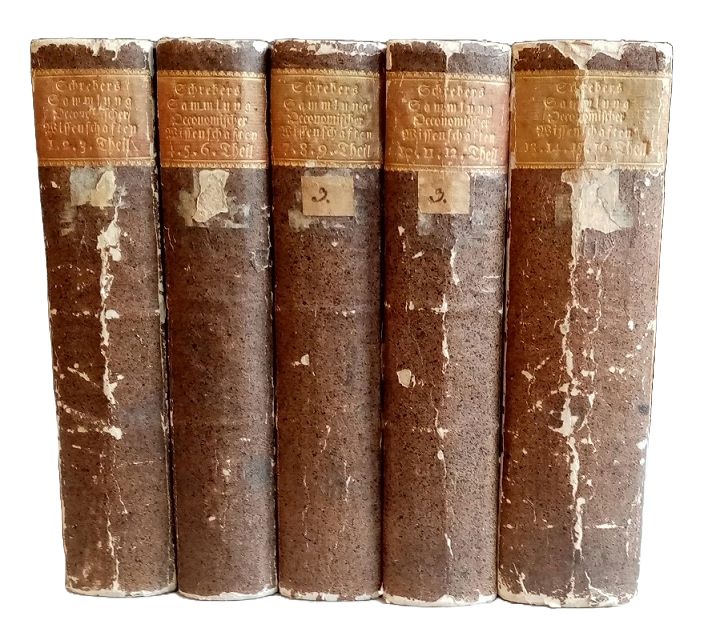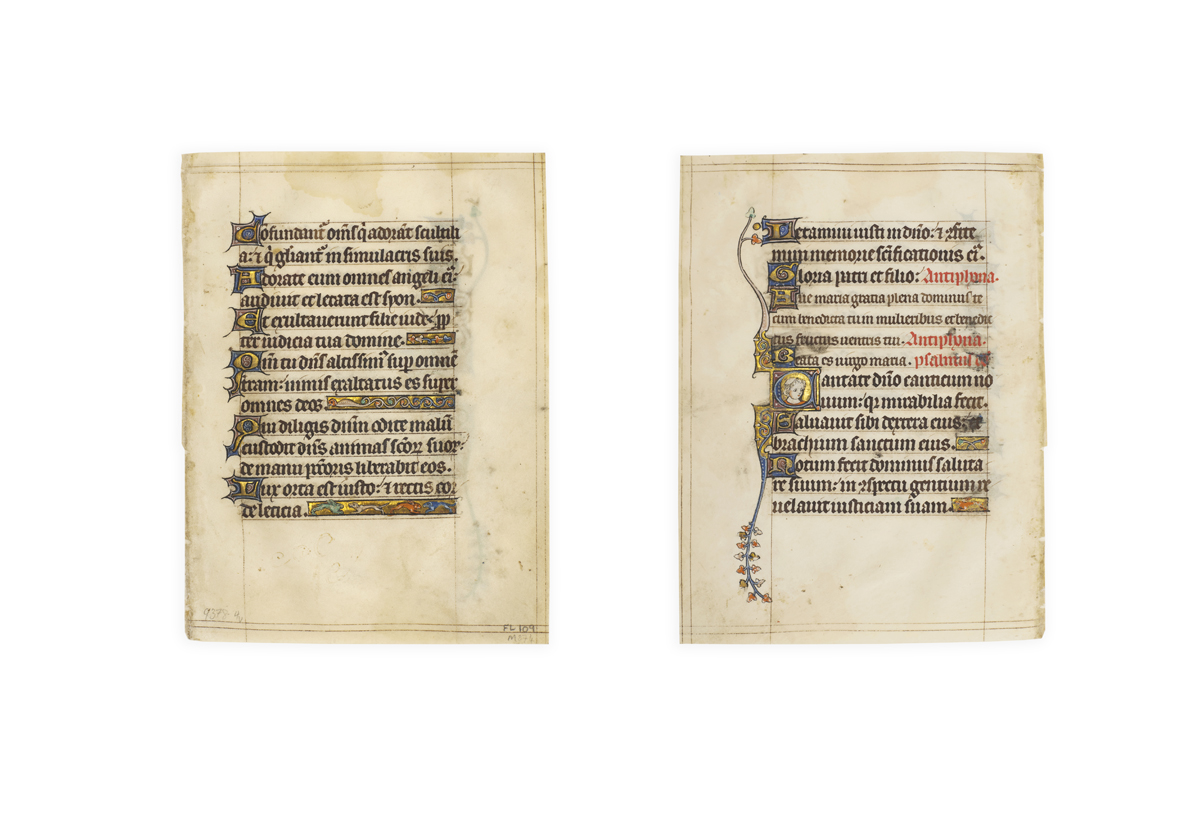


[MIRACLE STORIES.]
Miracle stories of the Virgin, in Latin
Germany, first half of 14th century.
Substantial fragments of two leaves (160 x 100 mm and 155 x 115 mm), originally joined and forming most of a bifolium, single columns with remains of 27 lines, written in a small gothic bookhand in dark brown ink, lightly ruled in ink, rubric ‘De quadam sancti moniali’ on verso of smaller fragment, capitals stroked in red; recovered from use as a binding and with consequent wear (especially to recto of larger fragment) and soiling, remains of paper label (‘[D]ialectica, & / Græca Lingua’) on recto of larger fragment, trimmed at foot of both fragments with loss of a few lines and along fore-edge of smaller fragment with loss of text, but generally in good condition and mostly legible.
Two fragments containing rare fourteenth-century miracle stories.
The larger fragment contains most of what was probably the most popular Miracle of the Virgin in the Middle Ages, in which the cleric Theophilus makes a pact with the devil in order to obtain a promotion, and subsequently is released from the deal by the Virgin (see J. Root, The Theophilus Legend in medieval text and image, 2017). The text begins here at ‘invenisti? At ille. Confitebor [et] gracias ago …’ and ends ‘… incessabili parte diem noctemque’.
The smaller fragment contains parts of two much rarer miracle legends. The first relates how it was revealed to a German cripple that, if he crossed the sea into England, he would be cured there in a church dedicated to the Virgin; and how this came to pass at a place in the territory of Bury St Edmunds (see H. L. D. Ward, Catalogue of Romances in the Department of Manuscripts in the British Museum, vol. II, 1893; repr. 1962, p. 648). The second concerns a nun who died before she could complete a penance; the nun later appeared to her abbess and said that the Virgin had promised to release her from the penance (see Ward p. 621). The text here begins at ‘domino gressumque illius disponente …’. The place of the first of these miracles is unknown; it is written as ‘Curdinges in territorio sancti gatmundi’ on the second line of the recto; but just as ‘gatmundi’ is based on a misreading of Edmundi/Eadmundi/Ædmundi, so Curdinges is doubtless incorrect; it is spelled ‘Curdiges’ in BL, Add. MS 18346, and ‘Turdinges’ in the French version by Jean Miélot (see G.F. Warner, Miracles de nostre dame collected by Jean Mielot, 1885, p. 40).

